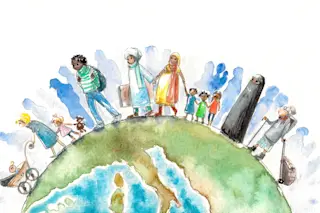Tracking migrants is a challenging task that policymakers, researchers and humanitarian organizations have long struggled to achieve. The data they use is often outdated, incomplete and inconsistent and this hampers efforts to understand movement and respond effectively to global crises and economic changes.
Now that looks set to change thanks to the work of Guanghua Chi at Facebook-owner Meta in Menlo Park, and colleagues, who have used anonymized data from three billion Facebook users to estimate monthly migration flows across 181 countries.
“Our estimates closely match high-quality measures of migration where available but can be produced nearly worldwide and with less delay than alternative methods,” they say.
The problem the team addresses is simple to state but hard to solve: to measure the long-term movement of people accurately, in near-real time, on a global scale. Traditional methods rely on censuses or administrative records, which are often collected irregularly and inconsistently ...














